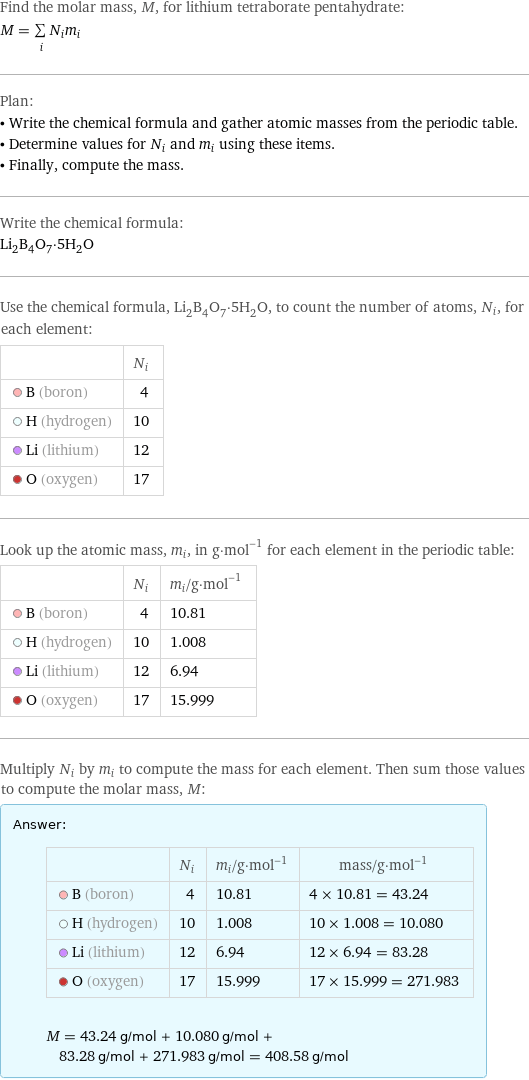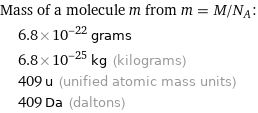Input interpretation

lithium tetraborate pentahydrate | molar mass
Result

Find the molar mass, M, for lithium tetraborate pentahydrate: M = sum _iN_im_i Plan: • Write the chemical formula and gather atomic masses from the periodic table. • Determine values for N_i and m_i using these items. • Finally, compute the mass. Write the chemical formula: Li_2B_4O_7·5H_2O Use the chemical formula, Li_2B_4O_7·5H_2O, to count the number of atoms, N_i, for each element: | N_i B (boron) | 4 H (hydrogen) | 10 Li (lithium) | 12 O (oxygen) | 17 Look up the atomic mass, m_i, in g·mol^(-1) for each element in the periodic table: | N_i | m_i/g·mol^(-1) B (boron) | 4 | 10.81 H (hydrogen) | 10 | 1.008 Li (lithium) | 12 | 6.94 O (oxygen) | 17 | 15.999 Multiply N_i by m_i to compute the mass for each element. Then sum those values to compute the molar mass, M: Answer: | | | N_i | m_i/g·mol^(-1) | mass/g·mol^(-1) B (boron) | 4 | 10.81 | 4 × 10.81 = 43.24 H (hydrogen) | 10 | 1.008 | 10 × 1.008 = 10.080 Li (lithium) | 12 | 6.94 | 12 × 6.94 = 83.28 O (oxygen) | 17 | 15.999 | 17 × 15.999 = 271.983 M = 43.24 g/mol + 10.080 g/mol + 83.28 g/mol + 271.983 g/mol = 408.58 g/mol
Unit conversion

0.4086 kg/mol (kilograms per mole)
Comparisons

≈ 0.57 × molar mass of fullerene ( ≈ 721 g/mol )

≈ 2.1 × molar mass of caffeine ( ≈ 194 g/mol )

≈ 7 × molar mass of sodium chloride ( ≈ 58 g/mol )
Corresponding quantities

Mass of a molecule m from m = M/N_A: | 6.8×10^-22 grams | 6.8×10^-25 kg (kilograms) | 409 u (unified atomic mass units) | 409 Da (daltons)

Relative molecular mass M_r from M_r = M_u/M: | 409